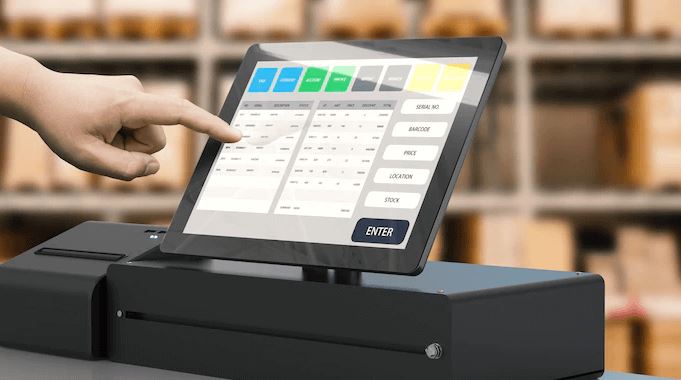In the fast-paced world of retail, where transactions are swift and customer interactions are dynamic, the importance of user-friendly interfaces in point-of-sale (POS) systems cannot be overstated. A seamless and intuitive interface not only enhances operational efficiency but also contributes significantly to customer satisfaction. Let’s delve into the key aspects that highlight the crucial role of user-friendly interfaces in POS systems.

1. Streamlining Operations with Intuitive Design
A user-friendly interface simplifies the overall operational process, allowing staff to navigate through the system effortlessly. Intuitive design elements, such as clear menu structures and easily identifiable buttons, minimize the learning curve for employees.
2. Accelerating Transaction Speed
Quick Access to Functions
POS interfaces that prioritize frequently used functions streamline the transaction process.
Efficient Navigation
Intuitive interfaces contribute to faster checkouts, reducing waiting times for customers.
3. Minimizing Training Time and Costs
Intuitive Onboarding
User-friendly interfaces require minimal training for new staff.
Reduced Errors
With a clear interface, the likelihood of errors during transactions decreases, saving both time and resources.
4. Enhancing Customer Interaction
Focus on the Customer, Not the Screen
A well-designed POS interface allows staff to engage with customers, providing a more personalized and enjoyable shopping experience.
Effortless Order Modifications
Quickly modifying orders or processing returns becomes a seamless task, fostering positive customer interactions.
5. Adaptability for Diverse Users
Accessible to All Staff
User-friendly interfaces to cater to users of varying technical proficiencies.
Customizable Preferences
POS systems with adaptable interfaces allow users to customize settings based on individual preferences, contributing to a more comfortable work environment.
6. Integration with Modern Technologies
Touchscreen Capabilities
POS interfaces that leverage touchscreen technology offer a more interactive and modern experience.
Compatibility with Mobile Devices
User-friendly interfaces extend beyond traditional terminals, ensuring compatibility with mobile devices for a flexible retail environment.
7. Error Prevention and Troubleshooting
Clear Error Messages
Intuitive interfaces provide straightforward error messages, aiding staff in identifying and resolving issues promptly.
User-Friendly Help Features
POS systems with built-in help features assist users in troubleshooting without external support.
8. Boosting Employee Satisfaction and Retention
Positive User Experience
Employees working with user-friendly interfaces experience higher job satisfaction.
Reduced Frustration
Intuitive design minimizes frustration, contributing to a positive workplace culture.
9. Future-proofing with Scalable Design
Readiness for Technological Advances
User-friendly interfaces are designed to adapt to evolving technologies seamlessly.
Scalable for Business Growth
As businesses expand, scalable interfaces can accommodate increased transactions and more extensive product catalogues.
10. Collecting Actionable Data for Business Insights
Efficient Reporting Tools
User-friendly POS interfaces offer robust reporting tools for tracking sales, inventory, and customer behaviour.
Informed Decision-Making
Access to actionable data empowers businesses to make informed decisions for growth and optimization.
11. Security and Confidentiality
Intuitive Security Protocols
User-friendly interfaces incorporate secure login procedures and authorization steps.
Confidentiality Assurance
Staff can confidently process transactions knowing that sensitive information is safeguarded.
12. Accessibility for Persons with Disabilities
Compliance with Accessibility Standards
User-friendly interfaces prioritize accessibility features, ensuring compliance with standards such as the Americans with Disabilities Act (ADA).
Voice Command Integration
Innovations in interface design include voice-activated commands, improving accessibility for users with diverse needs.
13. Multi-Language Support
Global Reach
POS interfaces that support multiple languages cater to diverse customer bases.
Enhanced Customer Experience
Visitors from various linguistic backgrounds can navigate the system comfortably, enhancing their overall shopping experience.
14. Environmental Considerations
Paperless Transactions
User-friendly interfaces can facilitate digital receipts, reducing paper waste.
Energy-Efficient Design
POS systems with energy-efficient interfaces contribute to sustainability efforts.
Conclusion
In the ever-evolving landscape of retail, where customer expectations are high and operational efficiency is paramount, user-friendly interfaces in POS systems emerge as a driving force. These interfaces not only streamline day-to-day operations but also contribute to a positive work environment and enhanced customer satisfaction. As businesses continue to invest in technology, prioritizing user-friendly design ensures a seamless transition into the future of retail. In essence, the user-friendly interface is the silent hero, shaping the retail experience for both customers and staff alike.
